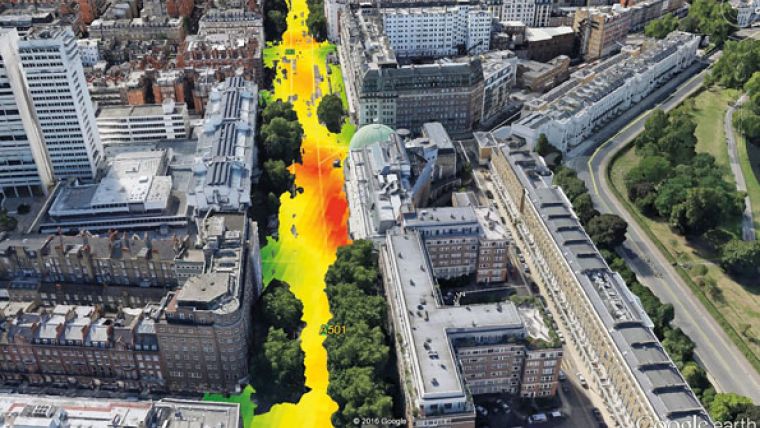EarthSense Systems Computer Models Impact of Trees on Urban Air Pollution
Software developed by EarthSense Systems has been used to assess how trees impact on urban air quality on one of London’s most polluted streets. Called FluidAir, the state of the art solution uses Computational Fluid Dynamics (CFD) to simulate the flow and dispersion of pollutants within complex 3D surroundings, such as city streets.
Scientists at EarthSense Systems, who specialise in air quality monitoring solutions, integrated road, building and tree data to create an accurate 3D model of the Marylebone area of London. Recorded pollution levels were combined with traffic flow data from the Department for Transport and meteorological information from London City Airport, to calculate pollution concentrations and investigate different tree scenarios.
“Air pollution is the world’s largest single environmental health risk. Globally it costs £3-5 trillion per year, affects 92% of the world’s population and is associated with more than three million deaths per annum. In the UK alone, the economic cost of air pollution is estimated at £54 billion, and 29,000-40,000 people are thought to die prematurely from its effects,” commented Antoine Jeanjean, Head of Modelling at EarthSense Systems. “With an increasing trend of urbanisation, our understanding of air pollution distribution has to increase and data collection and modelling must be used intelligently to aid key decisions and mitigation strategies.”
According to EarthSense scientists, the analysis of the CFD results, created using FluidAir, and the data monitored at the Marylebone site shows that trees should be considered as a mitigation measure where streets run parallel to the prevailing winds. However, they also concluded that trees may exacerbate pollution trapping for wind directions perpendicular to the street canyon orientation, and additional planting would not improve air pollution in this situation. The effect of trees on pedestrians was also investigated, and it was found that the introduction of trees in the street slightly changes the distribution of concentrations.
“Put simply, this study confirms previous findings that street air quality is altered by trees in many different ways depending on street geometry, wind speed and direction and sampling height,” concluded Jeanjean. “Using FluidAir for these studies improved the processing time and allowed for the inclusion of a wider range of data and, as a result, more detailed and in-depth analysis.”

Value staying current with geomatics?
Stay on the map with our expertly curated newsletters.
We provide educational insights, industry updates, and inspiring stories to help you learn, grow, and reach your full potential in your field. Don't miss out - subscribe today and ensure you're always informed, educated, and inspired.
Choose your newsletter(s)
























